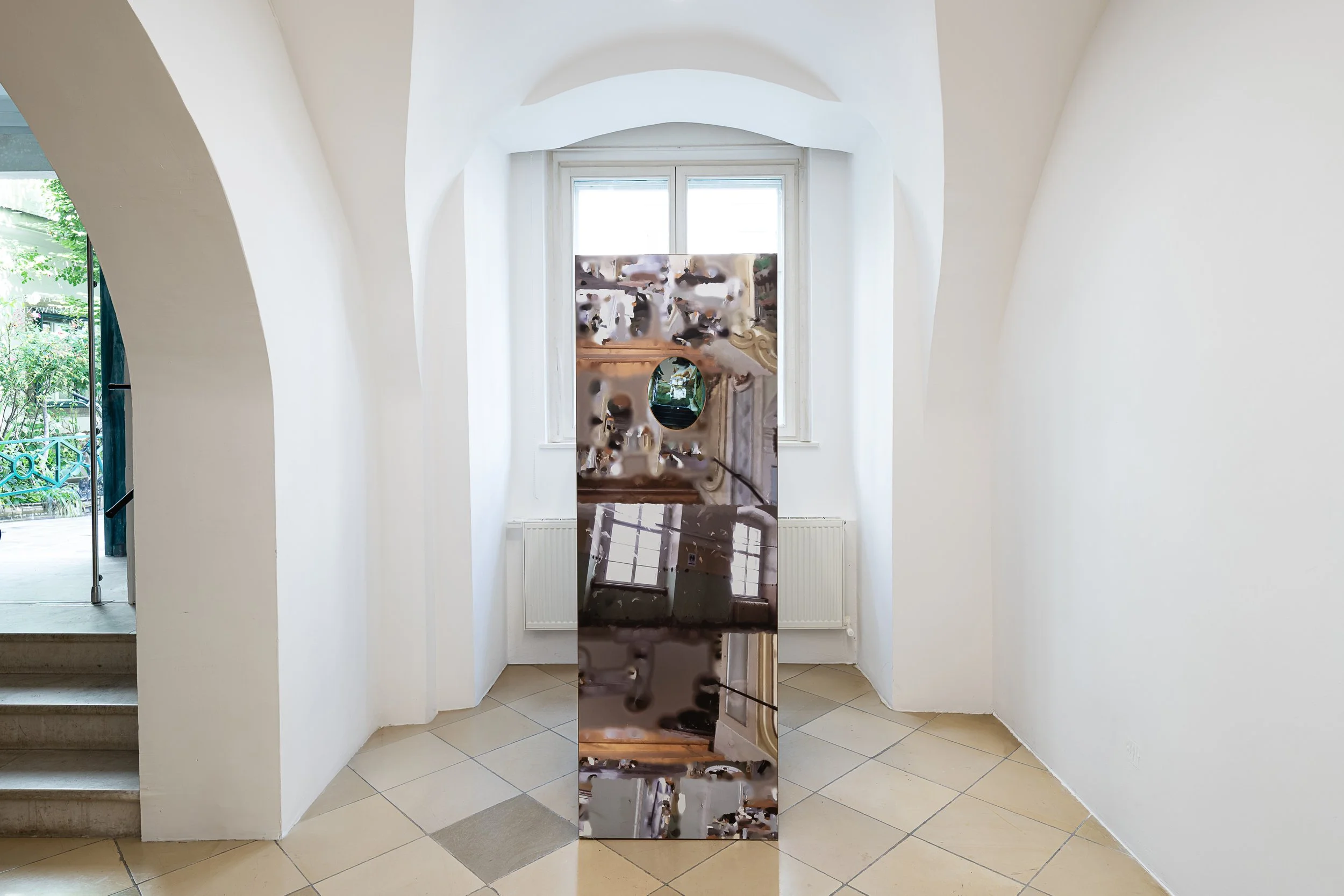I don’t know what the house wants, 2025, interactive installation, gameplay 25 min,


Through the opening in the sculptural element, the player sees a 3D representation of a 17th-century castle. When the player touches the left and right sides of the sculptural element, the game starts. A custom made controller embedded in the sculpture is activated and navigated through the touch of the player. When touched on the right side of the sculpture the player turns to the right, when touched on the left side, they turn to the left and when touched on both sides at the same time the player moves forward. The sculpture also functions as a sort of instrument, transmitting the recorded frequencies through both sound and vibration. The vibrations are felt through the parts of the body that are connected with the sculpture, like the hands and belly. The player can only hear and feel the story of the house by remaining physically connected. If they disconnect, the game ends.
Inside the 3D model, the player moves through the object where the recorded frequencies and video footage from site visits are embedded. At the end of a corridor is a screen, where the player can stop and watch a video of someone else moving through the same scanned space. What is shown, echoes the player’s own movement through the environment but new elements appear such as letters and other documentation. This second layer visualises the more human way of storing memory. In the third layer, the player sees another play-through of the 3D representation of the space, but now the textures and shapes are more abstracted and darker. This final layer includes an inner monologue reflecting on the human experience with the object. Throughout the videos, the player remains connected to the sculptural object.
Cover picture by Kunst-dokumentation.comPictures by Universität für Angewandte Kunst, Jogi Aust, 2025